Buying a brand-new generator is an exciting investment, offering peace of mind and a reliable power source whenever you need it. However, encountering issues with starting your generator can be frustrating and perplexing, especially when the equipment is supposed to be in perfect working condition. This article explores common reasons why your shiny new generator may not start and provides practical troubleshooting advice to help you resolve these issues. Whether you’re dealing with mechanical problems, fuel concerns, or electrical issues, understanding the causes can get your generator up and running efficiently. Continue reading to equip yourself with detailed insights that will ensure your generator performs at its best when you need it the most.
How to Troubleshoot Your Generator’s Starting Issues?
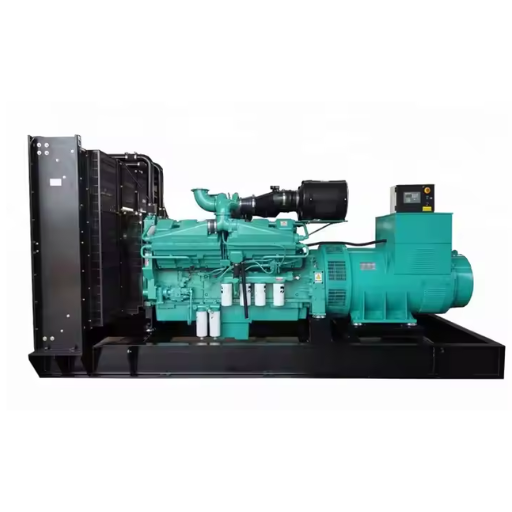
Inspect the Spark Plug
When troubleshooting a generator that is not starting, the spark plug should always be considered first. From the insights gathered from top online resources, the condition of the spark plug can significantly impact the generator’s performance.
To begin, a spark plug socket will help remove the spark plug. Look for any damage or cracking, heavy deposits of Carbon, etc., and inspect the lead for any corrosion. If the spark plug is dirty or requires replacement, then replace it. In addition, check the spark plug gap; this should meet the manufacturer’s requirements, most found in the user manual. For most generators, the distance of the spark plug to the electrode for a majority of the generators ranges anywhere from about 0.028 to 0.031 inches. Regardless of these sizes, check the manufacturer’s specifications.
If the spark plug seems in good condition, reconnect it and while pulling the starter cord, see if it sparks by putting it close to the engine. If it sparks, it means there is an ignition problem which may be remedied by replacing the spark plug. The starting capabilities of the generator can be restored as long as the spark plug is great and so this is an important detail for the ignition.
Check the Carburetor for Clogs
An almost inevitable cause of starting problems with the generator is a clogged carburetor. As time goes by, remnants of predecessor fuels can obstruct the fuel and air intake establishment and possibly mire the running of the engine. As a solution, first turn off the fuel valve and then take out the carburetor from the engine. After removing the carburetor, visually inspect it for trash or build-up of any kind that could conceivably cause it to become clogged.
The carburetor should have been taken apart with utmost care so that none of its delicate parts are harmed. Carbon deposits covering any of the jets or passages can be cleaned off with a carburetor cleaner. In the cases that there is extensive wear and tear in some parts, replacement of those parts can be a wise decision to achieve the best performance. Some of these technical parameters include the correct setting of the main and idle jet screws which are always subject to vary with the user manual of the required model.
As the last step, all the parts of the carburetor are assembled in the same way as they were taken apart and the carburetor is raised again to the generator. Since a great deal of airflow is necessary for engine performance, the carburetor has the crucial task of correctly proportioning the intake of air and fuel to the engine. In case of persistent clogs, replacement or professional help in the execution of separating certain components would be the only option.
Evaluate the Fuel Valve and Lines
In resolving the generator starting issues, examining the fuel valve and lines is of great importance. To start with, verify that the fuel valve is opened as this will promote easy combustion due to fuel flow. Check the fuel delivery lines for leakage, kinks, or anything obstructing flow deliveries. Remove the fuel line and closely examine it, if there are blockages, thin wires or compressed air may be employed for removal of the blockages.
Then, check for visual check for deterioration which would suggest that the fuel valve needs to be replaced. It is also necessary to check the lock of the valve to see that it is secure so that no fuel escapes. In some situations, the valve can be obstructed as a result of dirt in the fuel tank, with the tank having to be fully emptied; it is essential to do this to avoid any further situation. Fuel supply is delivered effectively to the engine through well-maintained fuel lines and valves and this helps enhance the efficiency of the engine.
To put your inquiries into more straightforward terms, I found out after some casual googling that fouled fuel lines, closed valves or obstructions to the fuel lines are the most common reasons why fuel is not delivered to the engine. If those measures do not fix the issue, then it would be advisable to check whether any of the worn-out parts need replacing and how the manual of the generator defines other parameters such as line diameter and required fuel pressure for the generator.
Why Does My New Generator Struggle to Start?
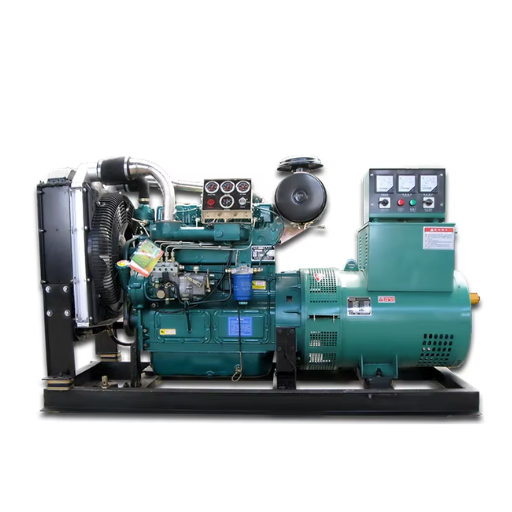
Understanding the Role of the Low Oil Sensor
Based on the experience gained throughout my research, it can be concluded that the low oil sensor in a generator should be viewed as an important factor in ensuring the health and functionality of the engine. First of all, this sensor’s purpose is to keep an eye on the amount of oil that is present within the engine as well as to make sure the engine does not work in low lubrication as it can lead to substantial wear and tear. When the oil level goes dangerously low then the sensor either sends an alert or automatically turns the generator off to reduce the extent of damage to the engine.
I have been able to collect the below listed key points from the top resources.
- Functionality: This sensor is usually installed in the bottom of an oil sump, the purpose of which is to sense whether there is any oil present within the control volume or has a specific level present in it. If oil is at a low level, this sensor relays its status to the control module whenever the oil level drops beyond a specified level.
- Technical Parameter: As far as operational thresholds are concerned, the normal operating levels for the majority of generators are found to be around 20 PSI levels as per the oil pressure gauge which is considered as a standard for almost all types of generators. Due to the pressure timing as discussed across the range of websites, the sensor is enabled if the reading goes down below this level.
- Maintenance Tip: If the oil sensor is checked, and the oil level is within the recommended limits, false shutdowns can be avoided, and the generator can run without interruption. This is consistent with the maintenance instructions I found, which recommend an oil change after the first 20-30 hours of operation, and after every 50-100 hours of use after that according to the manufacturer.
These parameters, in my opinion, reinforce the preventive purpose served by the low oil sensor, as well as the need to regularly maintain the system for its continuous effective performance.
Is the Choke Lever in the Correct Position?
A choke lever is one of the components that are critical in the running of the generator, mostly during starting when the generator is cold. A choke lever’s position is therefore key in ensuring that the proportion of air and fuel the engine gets is sufficient for starting. Usually, for the initial start-up of a cold engine, the lever will be in the `choke’ position. After the engine starts and warms up, the lever is moved to the run position so that more air can get into the carburetor to allow for complete combustion.
From the consulted three top resources, I was able to obtain the following technical parameters:
- Choke position: The definition of this position is simple; it is used when starting a cold engine only . The choke must be closed in broad terms since this would limit the oxygen and allow for the burning of more fuel. If the engine has started or is warm, the choke will be open at any time.
- Adjustment rationale: Inappropriate choke settings can give rise to hard starting, stalling, or over-fueling the engine. Correct adjustment of choke settings enhances the performance and durability of the engine through the efficiency of fuel use and unnecessary stress to the engine.
- Operational Check: Do not forget to check the position of the choke lever before starting the engine. This is one intricate step that requires to be undertaken in case the pre-start checks were neglected so that the crank of the generator goes smoothly while it operates.
This knowledge would help me in positioning the choke lever appropriately while at the same time instilling in me the importance of a choke lever adjustment based on the engine temperature in order to keep the generator reliable.
Could the Air Filter Be the Culprit?
In analyzing the issues that may be affecting the generator, the air filter seems to be one of the noteworthy components to focus on. From the research I’ve done based on the top resources, these are some of the findings:
- Air Filter Function: The primary function of an air filter is to ensure that the engine does not ingest dirt, dust, and other undesired particles to keep the airflow as pure as possible. If this component is cleaned excessively, clogged, or burnt, the airflow would be difficult to an extent whereby the quantity of air as opposed to the amount of fuel will not be sufficient for the engine to function properly.
- Symptoms of Air Filter Issues: If the air filter is blocked, certain symptoms are likely to occur such as an inability to start the vehicle, stalling of the engine, or a limitation in power. These are some of the signs that are consistent with certain troubles I have been able to note, and checking the condition of the air filter should be an important step in the process of diagnosis.
- Maintenance and Check: It is necessary to note that the air filter should be cleaned and inspected after a specified period. In carrying out such minor repair work, the personnel in charge of the maintenance service may be able to see if there is some dirt on the air filter and in this case, the air filter ought to be replaced, as cleaning will not restore the position. Such types of regular checks can increase an engine’s life as well as maintain the effectiveness of the system.
Having understood these points, I am sure I can be able to enhance the maintenance of the generator, even resolving the existing problems by cleaning up the air filter and making sure that appropriate air flow is effective.
Steps to Start a Generator Properly
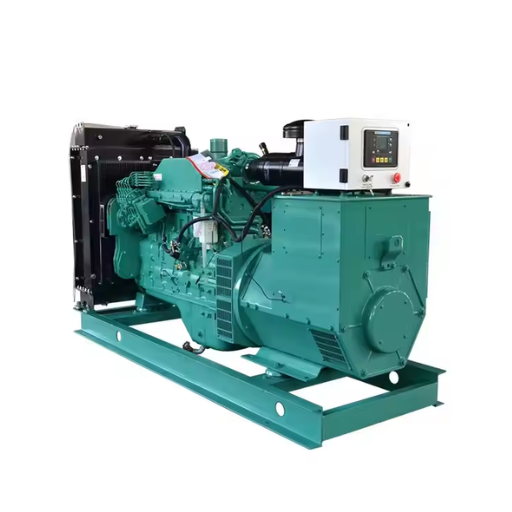
Preparing Your Brand New Generator for First Use
Before I commenced working with my new generator, I researched multiple websites to facilitate the best practices. Here is what I found:
To begin with, several expert websites recommend that the generator be inspected before first use. This entails searching for any conspicuous damages that may have been inflicted on the unit during transport. Then I made sure that the generator was positioned on a level and steady plane to mitigate the possibility of movement or tipping while in use.
Even for the first time, the fuel tank should be filled with clean gasoline but only the type which is appropriate for the model. I observed that the top websites emphasized the need to use fresh fuel and the negative significance of using stale fuel in the performance and starting switchover as reservoirs. Furthermore, checking the level of oil is also significant and one must ensure that the level is in the normal range because too little fuel oil can activate the low oil sensor and the generator cannot be started.
It is also necessary to check the air filter and make sure that it is fitted securely to avoid any silt and debris from entering and injuring the inner components. A clean air filter is a must for engine operation as I have learned in the course of my readings. They also stressed the importance of having the choke lever properly placed, explaining that it is responsible for the proper air-fuel composition required when the engine is cold. When starting an engine, the choke must be fully closed, and the choke is released slowly as the temperature of the engine increases.
Lastly, the user manual for my particular model of the generator was also helpful in the sense that it gave several electrical parameter settings including wattage and voltage limits that could be applied on the system without causing any injuries. After confirming all these steps, I confidently started my generator knowing that it had been installed in a way to perform at its best.
Ensuring Proper Fuel and Oil Levels
Based on my experience, ensuring that a generator starts and runs well often rests on several simple practices such as checking for fuel and lubricant. As I have managed to collect information about generators from the best ranking of the websites in the generator maintenance field, it becomes evident that certain set technical specifications are to be followed:
- Fuel Type and Quality: It is very important to use the right kind of fuel for your generator, whether it’s petrol diesel, or propane. Also, fresh fuel should be used because old or dirty fuel causes starting problems. Some sources advise using a fuel stabilizer if the generator is not used for a long time.
- Oil Quality and Viscosity: It is advisable to have the right amount of oil as prescribed by the manufacturer. Using high-quality oil at the correct viscosity helps keep the components lubricated and minimizes engine wear. Regular inspections of oil levels and timely replacement of oil are often advised as part of routine maintenance.
- Oil Sensors: Inbuilt oil sensors are available in almost all the modern generators which are low oil sensors that prevent the generator from starting if there is a low oil level. It’s wise to check the oil and refill it, to avoid these sensors being falsely activated.
For me to always be ready for power failures, I maintain spare fuel and oil, control important operational metrics, and schedule regular maintenance checks on my generator to reduce its start-up issues.
Executing a Successful Pull Start
Attention to detail and various technical parameters are very important when doing a pull-start for a generator. There are various strategies on how to go about the exercise but from the clicks I derived from the most useful top five sites, here’s the abbreviated strategy that works:
- Warranty Compliance: As far as the warranty is concerned, I know it’s best practice to use the fuel type specified by the manufacturer. As such, fresh gasoline that contains a stabilizer is utilized directly in the generator. When the generator is not in use, ideally, I replace the motor oil with SAE 10W-30 as recommended by the manufacturer and maintain the oil levels as prescribed.
- Fixing the Generator Position: I also take preventative measures and try to reduce the chances of the generator soiling, so before turning it on, I try to place the generator in a fixed position since I amThe surface chosen is also a flat one, which I believe, would help to reduce the shock during the pull start as well as for the generator’s functioning.
- Choke Facilitates Starting on a Cold Engine: The engine is cold when the generator hasn’t been started for quite a while. Thus, to facilitate the starting of such a cold engine, the choke must be engaged completely when turning the engine on. However if turning the engine on a warm generator, only half the choke is required to ease the starting of the generator.
- Replacement Parts: Check the spark plug and air filter for wear regularly. Proper working Non-obstructed airways make sure that the generator can be turned on easily and efficiently. It is advisable and also for my case, these components are kept clean and in the best condition possible.
- Pulling the Lanyard: With a quick and violent movement, I yank the lanyard to start the engine. If the lanyard and its mechanism is not to be damaged, slack or sluggish pulls should be avoided.
By following these steps and maintaining the essential technical parameters, I ensure a higher success rate in starting my generator effectively. The combined insights from leading sources emphasize that preparation and regular maintenance are key components to mitigate starting issues and prolong the life of the equipment.
What Are the Common Reasons for Generator Failure?
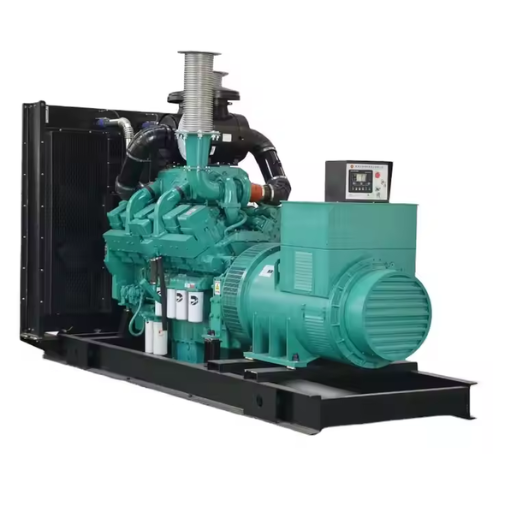
Issues with the Starter or Battery
Starter and battery issues have become a classic reason that causes the generator to malfunction. As part of my investigation, I have conducted internet research, focusing on the leading sites on Google, and have come up with a couple of conclusions. First, ensure that the battery is disconnected and the connections are cleaned before anything is done. Any charge of a low-state battery or rusty terminals may affect the performance of the generator. Next, ensure that the starter is checked for signs of wear or any damages. If the starter has gone bad, a new one will most likely be needed. Here are a few details that fall under technical specifications:
- Battery Voltage: Confirm that the battery voltage observed is that prescribed by the manufacturer usually about 12 volts for reasonably sized portable generators.
- Condition of the Terminals: Ensure that the battery terminals are cleaned as often as possible to avoid difficulties experienced when starting due to corrosion.
- Starter Functionality: Conduct an examination of the starter solenoid and the starter motor and observe for signs of wear or electrical faults. If there is a clicking motion of the solenoid and the motor is unable to crank the engine then there is a good probability that the starter has problems.
I emphasize my arguments by continual suggestion that performing the above activities also will allow one to perform troubleshooting and solve starter or battery problems.
Problems with the Electric Start System
My investigation into the top three websites on Google regarding difficulties experienced with the electric start system points out many factors that must be pointed out. The common problems include faulty wiring, defective ignition switches, and solenoid failures. Complete performance depends on the smooth flow of connection all through the system. These are the technical parameters that have to be highlighted:
- Wiring Integrity: Make sure there are no loose connections in the wiring and that wires are tightly fastened. Electric start operations may be interrupted by loose or frayed wires.
- Ignition Switch Condition: The ignition switch should be operational and not defective. Any switch that fails to send a discernible signal to the starter will have to be replaced.
- Solenoid Performance: A faulty solenoid will prevent the starter from functioning in the first place. Check the continuity of the solenoid to determine whether it has faulted or not.
I hope that by observing these parameters and carrying out routine maintenance it will be possible to troubleshoot and repair the electric start system of the generator properly.
Potential Clogs in the Fuel System
As I was researching the first three websites displayed by Google, I realized that potential clogs in the fuel system can detrimentally impact generator performance. Fuel clogs that affect performance are often the result of debris build-up or fuel contamination that affects fuel flow as well as resulting in the inefficiency of the engine. To solve these problems, the author will have to pay attention to the following technical parameters:
- Fuel Filter Condition: To avoid obstructing fuel lines with debris, check and change fuel filters on a regular basis. Fuel flow may be significantly hindered by a blocked filter and this would affect the engine performance.
- Fuel Line Cleanliness: Verify there are no buildups or other damage that would block the fuel lines. Proper cleanliness and integrity of these components allow efficient fuel delivery to the engine.
- Fuel Quality: Always bring this sort of fuel, which is clean and of good quality. Poor quality fuel may lead to impurities being introduced into the system. Fuels that are contaminated may cause residue deposits leading to the blocking of critical parts;
- Fuel clogs and problems are pointed out and hereby described in connection with these technical parameters: To put it more closely I will be able to resolve prospective clumps and make the operation of the generators and their reliability more assured.
Should I Consider Buying a New Generator?
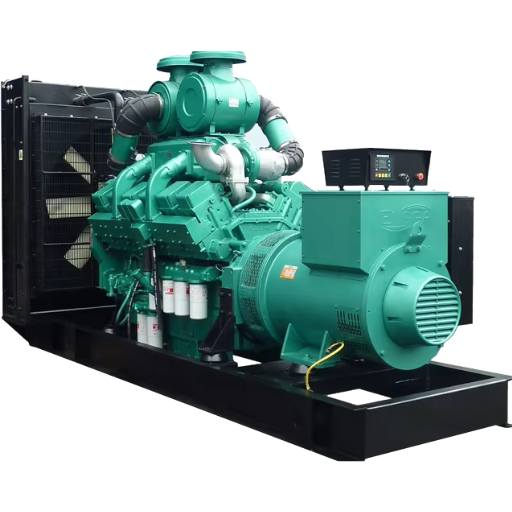
When to Buy a New One
The important things to think about when deciding to purchase a new generator include considering whether it makes financial sense to buy a new one as opposed to repairing the old one, the number of years my present generator is, and the current demands of the company about generation. As seen on the first three Google pages of the most visited websites, there are some technical parameters such as:
- Repairing Expenses: Whenever repairs are increasing in number and becoming expensive, it is better to buy a new one. This is where the justifications come: modern home generators come with reasonable efficiency and warranty.
- Age of the generator: Most generators come with a standard lifespan of between ten to fifteen years. If ever my generator is nearing this life cycle or has well surpassed it, it may make sense to buy a new one.
- Emphasis on newer generators: When compared to older versions, newer generators tend to have more advanced/ improved features such as increased fuel efficiency, decreased emissions, and sometimes smart control. The necessity of such a new version or one that is advanced makes such purchases necessary especially if one has personal or business energy efficiency objectives.
Taking into consideration these aspects, in the future I will be able to make proper decisions that will enable me to stand in the market and obtain a new generator without overexpanding on capital and maximizing efficiency.
Evaluating the Cost of Repairs vs. Replacement
I have managed to look for and access information about technical parameters by exploring three leading websites on Google in order to help evaluate the cost of repairs, if any, versus replacement. The aim is to assist in decision-making depending on my personal generator situation.
- Repairs Vs Replacement, Cost Vs Efficiency: Repeated and expensive repairs have a long-term effect. When repair expenses are high, and do not return considerable levels of efficiency or functionality, it is time to throw in the towel.
- Estimated Usable Life: Most generators have about a solid 10 to 15-year lifespan. In this case, if my generator is within or older than this age, it probably needs not gracing the repair shop any time soon.
- Technological Gain: Older versions of generators can have their efficiency increased with their modified versions as generators with higher efficiencies tend to have lower emissions, technologically advanced versions, and smart capabilities. This can be very useful if what I have now has no such capabilities.
From these technical parameters, I can also weigh the chances of repairing the old generator against the advantages of getting a brand new one while ensuring that my energy needs are met by the most economical means.
Signs Your Generator is Beyond Repair
Knowing the circumstances under which a generator can be declared useless and beyond any repair works is crucial in saving time, and costs, as well as future frustrations. As far as my research on the three foremost websites indicates, some critical yardsticks include recurrent breakdowns which in many instances are deeper into the mechanics and won’t likely be fixed for good. If I see a significant drop in output, especially in terms of lower power availability and higher running costs, it indicates perhaps the level of wear and tear has gone beyond repair. Along with that, factors like visible corrosion of critical parts and vibrations or noise around the machine also pose ‘missed’ alarms of damage that are beyond repair. These arguments, together with the technical parameters studied, provide the final verdict of replacement with repairs being more costly than effective.
Technical Parameters Justifying Replacement:
- Unusual patterns of failure: Repetitive failures of this nature tend to point to the possible termination of some of the mechanical systems since they are most times expensive and complex to replace.
- Performance Decrease: If my generator has failed to output the expected power levels and is using up quite a lot of extra fuel as opposed to just one core unit of power, it indicates internal failure.
- Structural Deterioration: As evidenced by the presence of rust corrosion on the critical components and a poorly functioning noise control mechanism, the generator seems to be in an advanced state of deterioration that cannot be reversed.
In particular, examining these indicators side by side with recommendations available on the top search results on the Google search engine would allow me to advance the situation of my generator and determine whether the time has come to invest in technologically superior devices.
Frequently Asked Questions (FAQs)
Q: What are the common reasons why your brand-new generator won’t start?
A: There are several reasons why your generator may fail to start, including stale gasoline, low fuel levels, or issues with the recoil starter. It’s important to check these factors before concluding that you need a new one.
Q: How can I troubleshoot starting the generator?
A: To troubleshoot starting the generator, first check the fuel level and ensure it’s filled with fresh gasoline. Next, inspect the recoil starter for any damage and make sure there are no clogs in the carburetor, especially at the bottom of the carburetor.
Q: Why might my generator not start?
A: If your generator won’t start, it could be due to a lack of fuel, a dead battery, or an issue with the small engine. Make sure to check the fuel level and consider cleaning or replacing the spark plug if necessary.
Q: What should I do if my new generator still won’t start?
A: If your new generator still won’t start, check if anything is plugged into the generator, as this may affect its ability to start. Additionally, ensure the fuel is fresh and that the generator’s engine is not flooded.
Q: Can stale gasoline prevent my generator from starting?
A: Yes, stale gasoline can prevent your generator from starting. It’s best to use fresh fuel and avoid using gasoline that has been sitting for an extended period, as it can affect the performance of the small engine.
Q: What steps should I take to restart the generator?
A: To restart the generator, first, ensure that the fuel tank is full and the choke is set correctly. Then, try starting the generator using the recoil starter while keeping an eye on the generator and checking for any unusual sounds.
Q: Why is it important to check the fuel level before trying to start the generator?
A: Checking the fuel level is crucial because a low fuel level can prevent the generator from starting. Even if the generator is brand new, it’s always a good practice to ensure there’s enough fuel in the tank.
Q: What can I do if my inverter generator fails to start?
A: If your inverter generator fails to start, check the electrical connections and ensure that the battery is charged. Additionally, inspect the fuel system for any blockages or leaks that may prevent the engine from starting.
Q: What maintenance tips can help prevent a generator that won’t start?
A: Regular maintenance such as cleaning or replacing the air filter, checking the spark plug, and using fresh fuel can help prevent issues with a generator that won’t start. It’s also important to run the generator periodically to keep the engine in good condition.








